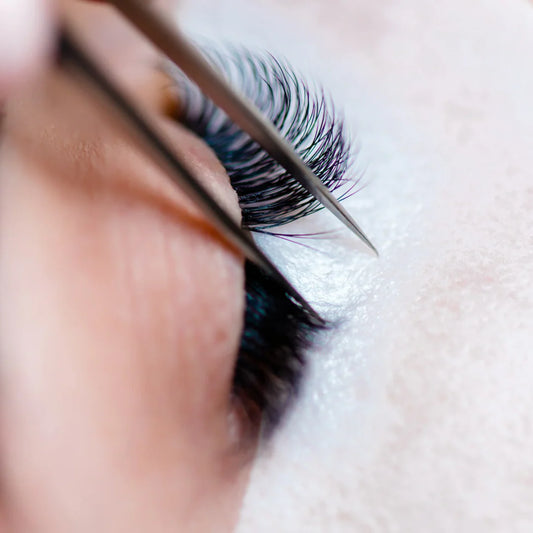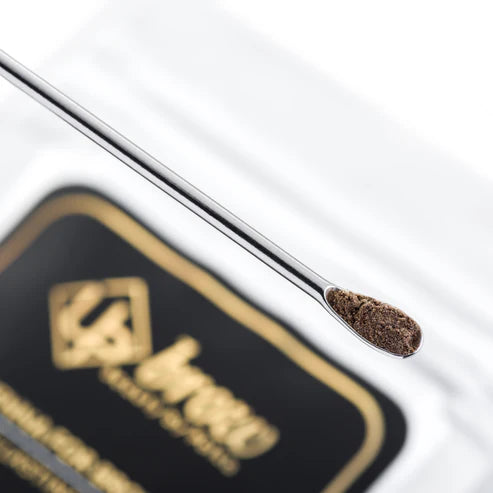Powdered Henna – A New Brow Tinting Method
Powdered henna is a relatively new brow tinting technique, offering a great alternative to traditional henna and permanent makeup. The powdered henna training, which also covers brow design drawing techniques, is suitable for both beginners entering the world of brow styling and experienced professionals looking to expand their services to include powdered henna. This treatment is a perfect complement to eyelash styling services. It provides more durability than regular henna, with a custom brow design that enhances natural beauty.
The powdered henna procedure involves the correct shaping and tinting of brows with special long-lasting products. The effect on the skin lasts up to 2 weeks, and on the hair, it can last between 6-8 weeks. By tinting the skin, the shape of the brows is maintained, even if the hair in that area temporarily or permanently stops growing.
This procedure is personalised for each client, taking into account the geometry of the brows and the choice of henna colour. The colour is selected individually based on the client's features, ensuring a natural, flawless finish. Powdered henna contains natural colouring ingredients, vitamins, and antioxidants, making it not only a beautifying treatment but also one that nourishes, regenerates, and strengthens natural brows.
During the training, participants will learn the perfect brow design, which can later be applied in micro blading services. They will also familiarise themselves with various brow shaping techniques. Brow shaping, contrary to popular belief, is not an easy task and requires precision.
The training is certified, so each participant who completes the course will receive a certificate authorising them to perform powdered henna treatments with brow design in beauty salons. Our courses are fully accredited by The Beauty Guild, and the training is carried out using Beauty by Polka Up brow products.
Training Structure:
The training consists of both theoretical and practical parts (work on a model). The first part – theoretical training – gives participants a full overview of the procedure's objectives, stages, and potential applications. The second part consists of practical exercises, where students apply the knowledge gained in real-world settings under the instructor's guidance.
Theoretical Part Includes:
- Safety regulations and workspace preparation
- Disinfection of tools and equipment
- Hair anatomy and functions, the importance of eyebrows, and the purpose of the procedure
- Contraindications for powdered henna and brow styling treatments
- Client consultation, correctly filling out client forms
- Patch test / allergy test
- Products used during the treatment, equipment, and accessories
- Brow architecture and geometry
- Identifying reference points
- Step-by-step drawing technique
- Brow types and shapes
- Facial shape types and brow suitability
- Different brow shaping methods (tweezers, wax, thread)
- Choosing henna color based on client’s features (spring, summer, autumn, winter)
- Types of henna and usage methods
- Gel henna
- Powdered henna
- Classic styling
- Ombre styling
- Henna colors
- Correcting brow shapes
- Tweezing technique
- Achieving the correct henna consistency
- Brow care after the treatment and recommendations for clients (refreshing brows)
Practical Part – Work on a Model:
- Client consultation
- Preparing the client for the treatment
- Brow analysis and colour selection
- Preliminary brow drawing
- Outlining the brows with paste
- Step-by-step procedure on the model, powdered henna application
- Brow shaping
The Training Fee Includes:
- Training script
- Certificate
- Products and accessories for practical training
- Model for practice
- Meals, snacks, and drinks during the training
- 10% permanent discount on purchases from the beautybypolka.com store
Course Duration and Details:
The training is one day long and can be conducted in either group or individual settings. The total course duration is up to 8 hours. The theoretical part lasts for 3 hours, followed by a 30-minute break for lunch, relaxation, and informal discussion. After the break, the practical part lasts for about 4 hours. Afterward, we have time for additional questions, explanations, a group photo, and the presentation of certificates.
For more information or to schedule your training, please contact us.







